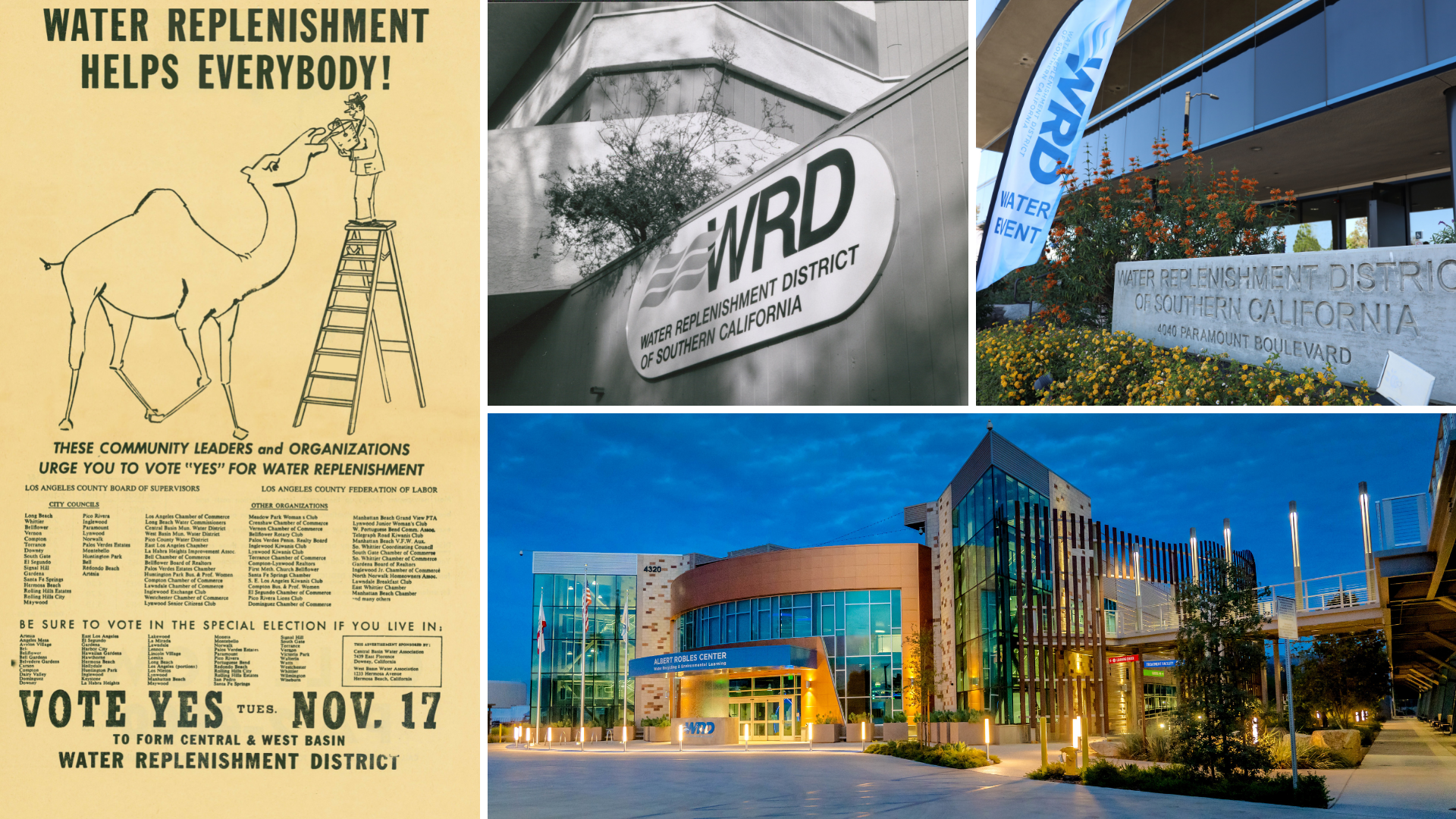Mission and History

WRD MISSION
To provide, protect, and preserve safe and sustainable groundwater.
WRD VISION
Utilizing groundwater aquifers to create a locally sustainable water supply for the Los Angeles Basin region.
WHAT WE DO
The Water Replenishment District (WRD) is the largest groundwater agency by population in the state of California, managing and protecting local groundwater resources for four million residents. WRD's service area covers a 420-square-mile region of southern Los Angeles County, the most populated county in the United States. The 43 cities in the service area, including a portion of the City of Los Angeles, and other unincorporated parts of LA County use about 220,000 acre-feet (72 billion gallons) of groundwater annually which accounts for nearly half of the region's water supply needs.
WRD ensures that a reliable supply of high-quality groundwater is available through replenishment with recycled water and stormwater capture. WRD is responsible for monitoring and testing groundwater throughout the region using effective management principles. In 2013 and 2014, WRD was appointed by the Court as the Watermaster Administrative Body for the Central and West Coast Basins. In this role, WRD is responsible for administering the terms of the legal judgments controlling pumping, water right sales and leases, storage, and carry-over conversions.
WRD owns three water treatment facilities: two advanced water treatment facilities and a groundwater desalter. Furthermore, WRD leads the robust Regional Groundwater Quality Monitoring Program, a Safe Drinking Water Program, and a Water Education Program.
WRD HISTORY
WRD was formed by a vote of the people in 1959 for the purpose of protecting the groundwater resources of the Central and West Coast Groundwater Basins. Prior to the formation of the District in 1959, unregulated and unmanaged over-pumping caused severe overdraft and many water wells to go dry. Along the coastline, groundwater levels dropped below sea level, allowing the salty ocean water to seep into and contaminate the freshwater aquifers.
As a groundwater management agency, WRD provides supplemental replenishment water delivery to two Los Angeles County Public Works infrastructure systems: the Montebello Forebay spreading grounds located inland atop the Central Basin, and seawater barrier injection wells located along the coast. Traditionally, imported water was used to supplement these systems. Through technological and regulatory advancements, recycled water can now be used for 100% of supplemental replenishment purposes.
Recognizing the value of recycled water early on, WRD found innovative methods to increase its ratio of recycled water use for replenishment purposes starting in the 1960s. The final push to replace all imported water supplies with recycled water and stormwater capture came in 2004 with the introduction of the Water Independence Now (WIN) program. Over the following 15 years, the suite of WIN projects successfully created a locally sustainable water supply for groundwater replenishment, and in 2020 WRD did not purchase any imported water for replenishment purposes at the Montebello Forebay Spreading Grounds.
Today, the WIN program’s holistic approach has been expanded to the WIN 4 ALL program, a regional effort to increase groundwater reliance, sustainable replenishment supplies, and storage within the LA Basin region. WRD and its partners are mapping out projects that will increase storage and reliance on groundwater in the region while developing recycled water and stormwater capture sources for replenishment.
The WRD Ad Hoc History Committee worked on writing and publishing the WRD history book.
CELEBRATING 60 YEARS OF SUSTAINABLE GROUNDWATER MANAGEMENT
WRD celebrated 60 years of operation in November 2019. For a visual and interactive account of our history, view our Story Map below. To see the Story Map in a separate browser tab click here.


